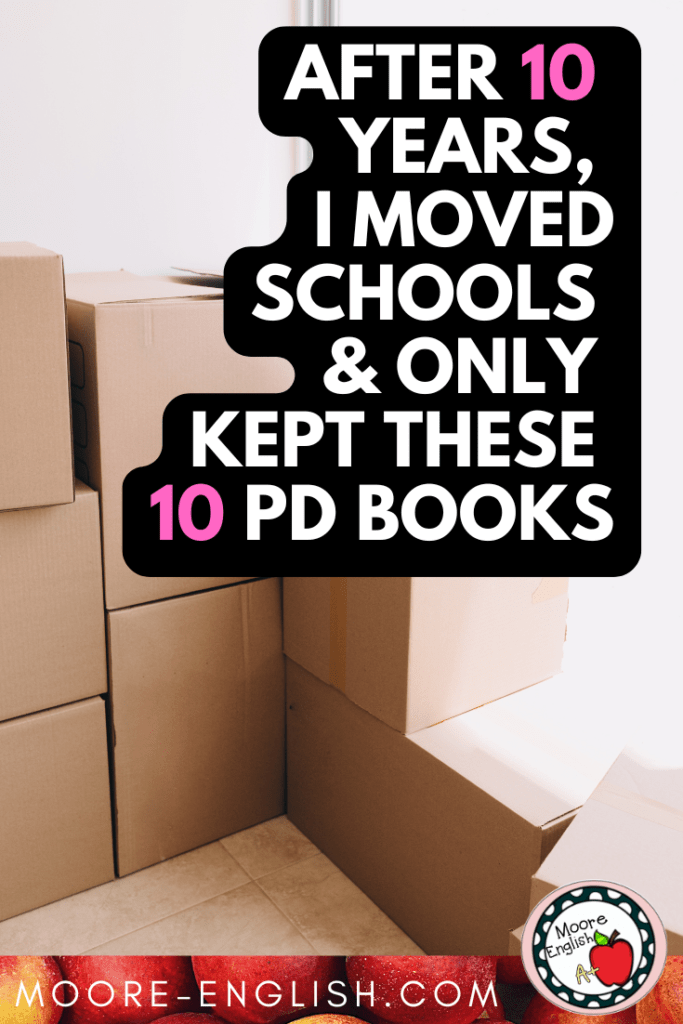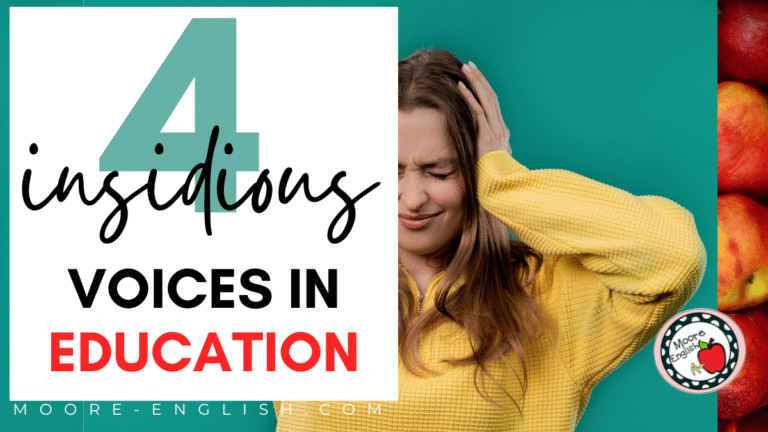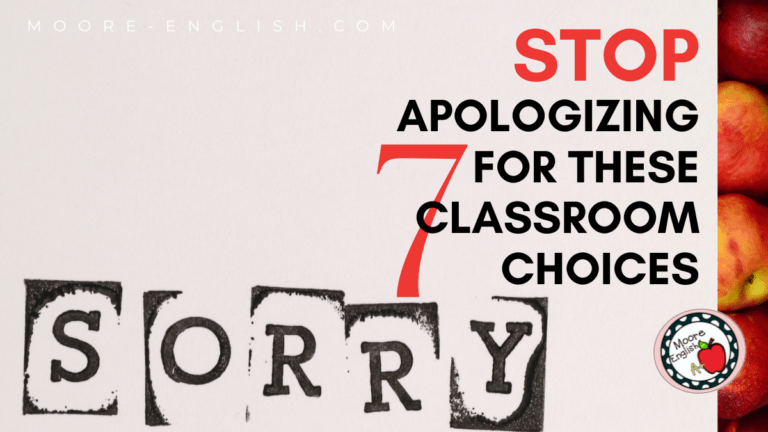I just changed school districts after more than a decade. I moved several hours away, so I decluttered a lot. I wanted to be intentional about what I packed. In the end, I only kept 10 PD books.
As I donated books and passed them along, I only kept PD books that I have referenced recently. I didn’t keep anything trendy, but I did keep a lot of tried-and-true titles. I’m not one for fads, but I am one for straight talk from fellow professionals whom I respect.
Today, I want to share the 10 PD books that survived the declutter.
This post this post may contain affiliate links. Please read the Terms of Use.
PD Books for Instruction
Strategies that Work by Stephanie Harvey and Anne Goudvis was a hand-me-down from my mom, who taught elementary school for more than thirty years. It’s neat to see places where she left notes about her third graders. I often find myself using the same or similar strategies with my high school students!
Visible Learning for Teachers by John Hattie is probably the most popular book on my list. This is definitely a book I associate with admin. This is also a good book to reference on your annual teacher evaluation. For example, if you have to reference a specific strategy and justify your decision to use it, this is a perfect text!
Powerful Teaching by Pooja K. Agarwal and Patrice M. Bain is the only book on this list that I kept from a schoolwide book study. Over the years, admin and instructional coaches put different PD books into my hands. This is the only one I thought was worth keeping! I love how Agarwal and Bain marry data with personal experiences. Plus, this book lends itself to any content area.
A Framework for Understanding Poverty by Ruby K. Payne is probably the most controversial book on this list. Over the years, there’s been plenty of criticism of Payne’s work, some of it merited and a reflection of her privilege. Nevertheless, this is a book that has routinely helped give me insight into some of my biases and privilege.
PD Books for ELA Teachers
7 Keys to Comprehension by Susan Zimmermann and Chryse Hutchins is my token science of reading book. As a high school English teacher, I don’t spend a lot of time with my hands in the science of reading. However, this is a good “starter pack” for high school teachers. This is also a good book to pull from if you are working across content areas.
50 Literacy Strategies by Gail Tompkins was a book I purchased by accident. What a happy accident! Of the books on this list, this is the one that is the easiest to immediately apply to your instruction. I have an edition with perforated pages, so you can pull each instructional strategy out to reference while you’re teaching.
Notice and Note by Robert E Probst and Kylene Beers is such a classic. This is another book that English teachers can apply almost instantly to their instruction. (Notably, I didn’t keep Reading Nonfiction, the companion book. It’s a good PD book, but it rehashes similar territory, so I didn’t feel like I needed to keep both.)
6+1 Traits of Writing by Ruth Culham is another one of the PD books I inherited from my mom! This is my go-to when I need to make a writing intervention. I like how this book helps high school teachers bridge the gap from middle to high school writing.
Inside Out by Dawn Latta Kirby and Darren Crovitz is another good title for teaching writing. Of the two writing books on this list, I think this one is more focused on high school instruction, but you can apply the strategies to any grade level.
The English Teacher’s Companion by Jim Burke is maybe the most comprehensive PD book for English teachers. Burke touches on every aspect of teaching English (including non-content material like building relationships) whereas some of the other PD books in this section focus on only one or two specific parts of ELA.
Honorable Mentions
Understanding by Design by Grant Wiggins and Jay McTighe is an honorable mention because I don’t have a physical copy of the book anymore! I loaned the book to a coworker, and he never returned it! However, if I did have it, I would have moved it. If you’re looking for guidance about curriculum design, this is the PD book for you!
The next set of honorable mentions are technically not PD books, but they’re also not books you add to your classroom library. They’re books used when I’m searching for a reading passage or for inspiration for a new English lesson.
- First, I kept all of my Norton anthologies. English teacher friends, IYKYK.
- Similarly, I kept The Compact Bedford Introduction to Literature by Michael Meyer and D. Quentin Miller and Literature for Composition by Sylvan Barnet et al. because these books have really good sections about introducing literary criticism.
- Additionally, I kept The Rhetorical Tradition by Patricia Bizzell et al. because sometimes it’s hard to find a persuasive text that hits specific skills while also being school appropriate.
- Finally, I kept my copy of the MLA Handbook. Obviously.












